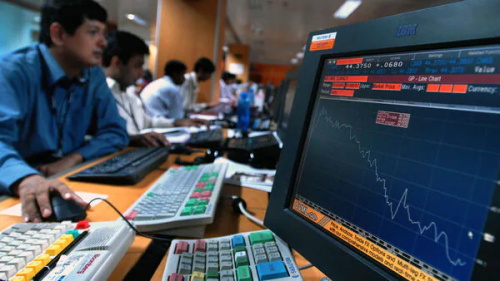India’s Stock Market Bubble? Sensex 100k vs. Weak Rupee Reality

There was a time when India’s stock market was considered a marginal player—lacking the depth, dynamism, and global appeal of heavyweights like the U.S. or Japan. But in recent years, the rapid rise of India’s equity markets has forced global investors to re-evaluate the country’s capital narrative.
In July 2024, the BSE Sensex index broke through the 80,000-point barrier for the first time in history—a meteoric rise from just under 3,000 in 2003. This multi-year rally drew in a wave of local retail investors and foreign institutions, doubling the number of investor accounts since 2020. Amid global volatility and pressure on other emerging markets, India emerged as a perceived “last safe haven.”
But as the saying goes: “The higher you climb, the harder you fall.” The euphoric race toward 100,000 points for the Sensex peaked in September 2024. What followed was a sharp and sustained correction. In October, overseas investors withdrew an unprecedented $12 billion from Indian equities within just one month—an all-time high in terms of monthly outflows and a clear signal of collapsing foreign confidence in the market. Within just a few months, more than $1 trillion in market capitalization vanished—equivalent to about 4.5% of India’s GDP. Simultaneously, the Indian rupee tumbled to new lows against the U.S. dollar, compounding the market’s woes.
Both the Sensex and Nifty 50 indices slumped in tandem. October saw declines of 5.8% and 6.2%, respectively—their worst monthly performance since 2020. On February 28, 2025, the Sensex dropped 1,414 points in a single day—a 1.9% plunge, its steepest one-day fall of the year. Meanwhile, the Nifty 50 posted its fifth consecutive monthly loss, marking the longest losing streak since 1996. India, once the darling of global investors, had become one of the world’s worst-performing markets.
This abrupt downturn was not caused by one single event but by the convergence of several structural risks. Chief among them: a persistent overvaluation. While India’s economic growth remains relatively resilient, equity valuations had climbed far beyond global norms. Even after a mild retreat from 2022 highs, the NSE 500's price-to-earnings (P/E) ratio remains in the top 75th percentile of the past decade. Compared with the S&P 500’s 25x and MSCI Emerging Markets’ 12x, India’s market—hovering near 30x—looks alarmingly expensive, especially given slowing earnings momentum.
The bubble wasn’t just about macro sentiment—it was embedded in the market structure. Heavily weighted sectors like financials and IT were inflated by domestic flows, keeping headline indices elevated. Meanwhile, small- and mid-cap stocks had already entered a bear market. The Nifty Smallcap 100 had fallen 26% from its peak, and the Midcap 100 over 22%. The result? A market-wide illusion: the index appeared stable, but most stocks were already deep in correction territory.
Foreign capital outflows only intensified the selloff. In early 2025, global jitters were amplified by renewed U.S. trade tensions. The Trump administration’s announcement of impending tariffs on Mexico and Canada triggered a global flight to safety. India, with its stretched valuations and weak currency, quickly became a target for withdrawal. Add to this the post-election uncertainty in the U.S., mounting American debt, and a stronger dollar pulling capital back home, and India’s fall from grace seemed almost inevitable.
At the same time, India’s own macroeconomic headwinds were coming to the fore. Inflation remained elevated at 6.2% by the end of 2024, eroding consumer spending and squeezing corporate profits. Rising input costs and sluggish urban demand cast doubt on India’s growth narrative. With foreign investors exiting, domestic players showed little appetite to step in, leaving the market unsupported.
What’s more worrying is that even after this correction, analysts warn the bubble hasn't fully deflated. Many stocks, though down by 30% or more, are still considered overvalued relative to fundamentals. As Aditya Sood, a fund manager at InCred Asset Management, put it: “We’re in a high-risk phase. Without a meaningful recovery in earnings, this could just be the beginning of capital flight.”
India’s government hasn’t remained idle, but current stabilization efforts—policy statements, restrictions on short-selling, and appeals to domestic investors—have done little to change market sentiment. In an environment of cautious global capital, India needs more than verbal reassurance. Real progress on inflation, consumption, and earnings is essential. Without that, restoring investor confidence—especially among foreign funds—will be an uphill battle.
Ultimately, India’s dramatic boom-to-bust stock market cycle reflects both global risk aversion and internal structural imbalances. Once hailed as the rising star of the emerging world, India now finds itself mired in valuation excess and policy inertia. Whether the Sensex will ever breach the 100,000 mark again depends not on investor enthusiasm, but on tangible, sustainable economic growth and corporate profitability. As the old adage goes: bull markets run on hope—but bear markets only end on earnings.



